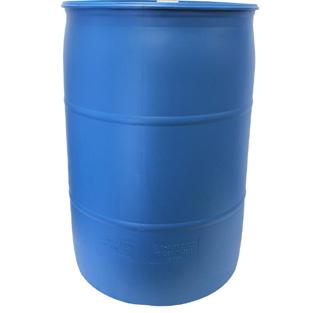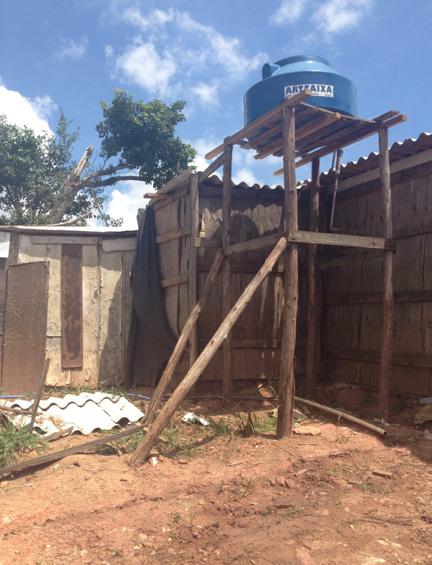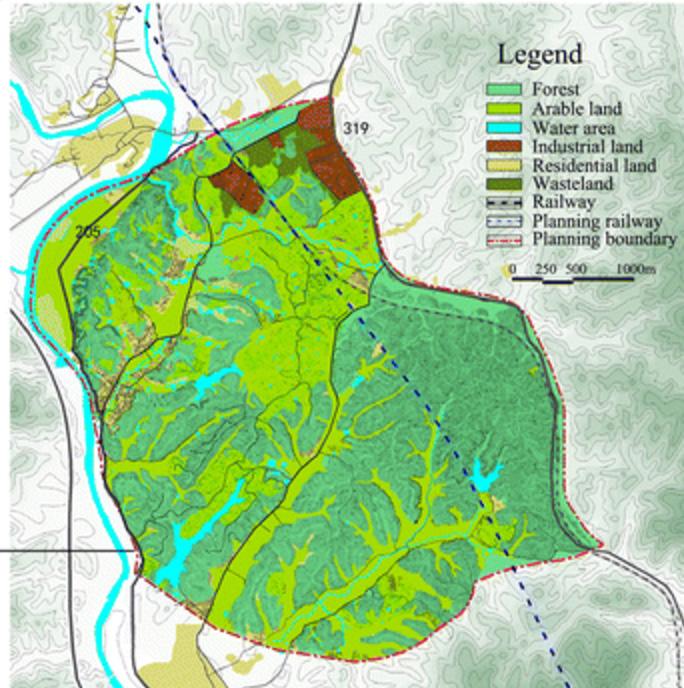
4 minute read
Runoff Mitigation With Rain Barrels
areas of the community can discourage the behavior of littering. In addition, providing ashtrays can also contain any litter. Liu and Sibley (2004) reported that adding ashtrays to a university campus reduced cigarette butt littering by 64%, however the change did not affect attitudes about litter. Confederates in the community could demonstrate the behavior of using ashtrays in areas where they are provided and educating others to use the ashtrays as well, or to not smoke in designated non-smoking areas. The use of confederates can help create an understanding of and normalize the new behavior. Again, these confederates can be designated community members or Association coordinators.
COSTS:
Intervention Per Unit Cost Total Cost Signage $50 USD $450 USD Ashtrays $30 USD TBD
RUNOFF MITIGATION WITH RAIN BARRELS
A rain barrel is a plastic barrel that collects runoff from the rooftops. Water collected in these barrels can be used for gardening and other purposes, but not for direct water consumption by humans.
The Association and the Institution should pursue a collaborative effort for installing rain barrels as a mid-cost and effective solution in reducing water contamination. According to our water test findings, there is evidence of bacterial contamination and other pollutants in the creek bed and springs. Runoff contributes to this contamination: “Typically, rainwater will run off of ... [the] roof and end up either in a local sewage system or stream. On the journey, the
154 Rain Barrel

155 Signage to Encourage No Smoking.

156 Water Tanks in Ocupação Anchieta. water will pick up pollutants like yard fertilizers, oil and gasoline from street surfaces, animal waste, and more” (Build your own rain barrel, 2008, p. 128). Rain barrels have the potential to be a useful, mid investment that will reduce the environmental impact of pollutants in the area.
The Taubman Team suggests installing one hundred 55-gallon rain barrels for the Occupation as current structures may withstand the size and weight (458.7 lbs) of a full barrel. According to our calculations, one hundred 55-gallon rain barrels will reduce runoff in the Occupation by approximately 15% during a rain event of 1 inch. These calculations assume the impact for 600 structures averaging 10x10ft in area, and also takes into account that most structures have a shed or flat roof. São Paulo receives an average of 57.2 inches of rainfall annually. Approximately 680 55-gallon rain barrels would be needed to contain rainfall for 600 structures during a rain event of 1 inch.
These rain barrels should be located in areas where new landscaping and tree plantings are proposed in the Creek Revival component of this action plan. Placing rain barrels in these locations will provide a source of water for the new plantings, especially in the case of a drought. Rain barrels can also be used to support sewage infrastructure if water is required.
The Occupation already uses water barrels on the site. These water barrels do not collect rainwater but instead store municipal water in case there is an emergency water shutoff. These barrels communicate that residents may accept rain barrels as appropriate infrastructure. The use of rain barrels may also inform housing designs, or can be used to complement educational workshops on environmental stewardship.

CASE STUDY: Changting, China
Urbanization of land in areas of southeastern China has impacted the natural hydrological cycle and the ability to mitigate water pollution and flood disasters. Traditional drainage approaches for flood control, especially under the increasing rainfall due to climate change, was inefficient and the need for a new solution became evident. A study in Changting, China estimated the potential of collectable rainwater to mitigate flood disasters. Concretely, the study investigated the potential collectable rainwater and the extent to which runoff can be mitigated by rainwater harvesting. Researchers estimated potential cistern capacity under different weather circumstances. The results of this study show that rainwater harvesting has a great potential in reducing the potential of flood disasters. The rainwater harvesting can reduce 100% of runoff volume in the case of critical rainfall (Zhang, 2014).
157 Map of Changting, China.
Additionally, the rain barrels can be used to water new landscaping proposed as part of the creek and springs revitalization action plan.
The Institute could assist in securing funding of the rain barrels. One possible system may be for the Institute to subsidize the cost of rain barrels. Residents show a capacity to save money and purchase accessories, as evidenced by the drinking water storage barrels that already exist in the Occupation. However, given the large, positive externality associated with the adoption of rain barrels, the Institute may work with the Association in making rain barrels more accessible or affordable to residents via donations or group discounts.
One caveat, however, is cost. While rain barrels are seen as a low-cost solution to run off, at this scale and precedence, money may be better spent towards developing more permanent infrastructure solutions to storm water management.
COSTS:
Intervention Per Unit Cost Total Cost Rain barrel $40-$50 USD $4,000 - $5,000 USD






